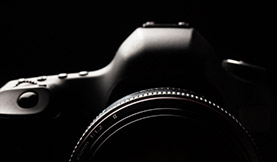Video Tutorial: How to Perform Secondary Color Correction in Final Cut Pro X
Change and isolate colors! Learn secondary color correction techniques in Final Cut Pro X!
Secondary color correction allows you to isolate a very narrow hue spectrum and affect it without changing the rest of the image.
Watch this video tutorial to find out how to perform single and multiple secondary color corrections in Final Cut Pro X!
This Final Cut Pro X video tutorial will teach you how to:
- Sample a color using the Color Mask tool
- Apply color corrections based on your color mask selection
- Adjust your color mask softness
- Apply multiple corrections (and thus multiple masks) to your image
Full Video Transcription
Hello. This is Ashley Kennedy with PremiumBeat.com, here to show you how to perform a secondary color correction in Final Cut Pro X. Now, secondary color correction is when you affect a very narrow range of hues and don’t really affect the rest of the image. So for example, in this picture I have a garden with some yellow roses, and we’re going to make them orange. So to do that, we’re going to go ahead and just click on the clip and open the Inspector – shortcut, command and 4. Over here in the color panel we want to add a color mask, which is this button right here. I’m going to go ahead and click on it, and then when we come over into our Viewer we have an eye dropper. I’m going to go ahead and click right here, right on the yellow rose, and then drag out. The more I drag out, the wider range of yellow hues are sampled.
Now I don’t want to go too much or else is will get all of that green. So I want to find just the right amount so that it’s just primarily those yellow roses, and I’ll let go. I notice that my color mask is sampled right here. This is going to allow me to affect just that color. So, I’m going to go to my color board, and now we can affect the color however we want. Here in the color tab, I can take my global control and move it up into that orange category like so, and you can see that now I have my orange flowers. I can then come into saturation and bump up the saturation, or down. So we’ll kind of bump it up a little bit here. And same thing with exposure. I like the exposure kind of where it was. It seems the most realistic. OK. So basically here we have performed a pretty simple secondary color correction. If we go back to my Inspector here, you can see that here’s my color mask. We now have masked the original yellow color with orange, and I have a slider right next to it which controls the softness, or basically the falloff from my selected color to the rest of the color palette. So I can drag it back and forth to soften it or make it sharper. I think we’ll leave it right where it is. So here we go. We’ve changed the color of those roses.
Now, you can apply multiple secondary color corrections as well. Let’s go ahead to a little bit more of a complex picture here. Let’s go ahead and make this entire group of flowers all orange flowers. Alright. So, I’m going to go ahead and click on this image. Again, we want to add a color mask, so I am going to click right here and we’ll start with the yellow. Now notice that our sun is also a little yellow so we want to be careful as we drag. I’ll go ahead and drag, and there’s my yellow flowers. You notice the sun kind of picks it up right there. It’s really a judgment call, as to if you go a little bit under or a little bit over. I’m going to go ahead and do a little bit over, so that a little bit of that sun is going to get that orange glow as well. So, I’m going to come into my color board and starting over with the color adjustment, I’m going to go ahead and drag that up to orange. Alright. And I might go in and adjust my saturation and exposure as well, but just for the purposes of this demonstration, I’m going to leave it at that. I’m going to go ahead and go back to my inspector, and we’re going to press this button which is “add a correction”. We’ll go ahead and add a color correction right underneath it. Again, get another color mask. Let’s go ahead and get our red this time. It’s sampling all of our red. Again, if I go too far it’s going to get too much, so I’m going to stop right there. Let go, and go in and get those to be orange.
Next we need to go in for the purple. Add the color correction. Get the color mask. Grab my purple. And make that orange as well. Alright, so we’re back out of the inspector and we have three corrections applied with three different masks. We’re well on our way of making our meadow full of orange tulips. It does need a little bit of tweaking in terms of exposure and saturation. They’re probably a little bit too orange. So we can come in and adjust those as necessary. Also, if you want to look at any of these color corrections in their original state, you just need to click on the button to the left of the correction and you can see what it came from before you applied it. OK. Thanks for joining us on this lesson on secondary color correction in Final Cut Pro X. Remember to check back often at PremiumBeat.com for more exciting video tutorials on both Avid and Final Cut Pro. This is Ashley Kennedy with PremiumBeat.com.





